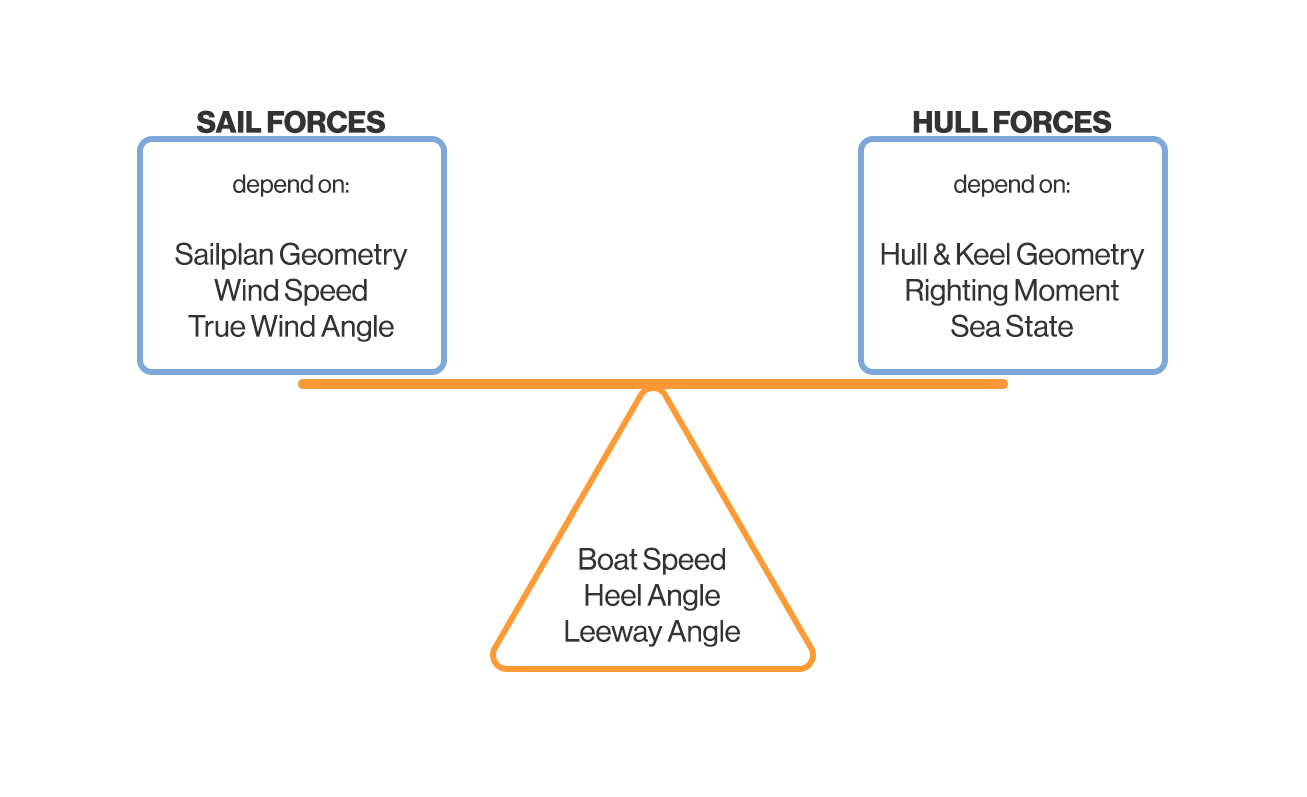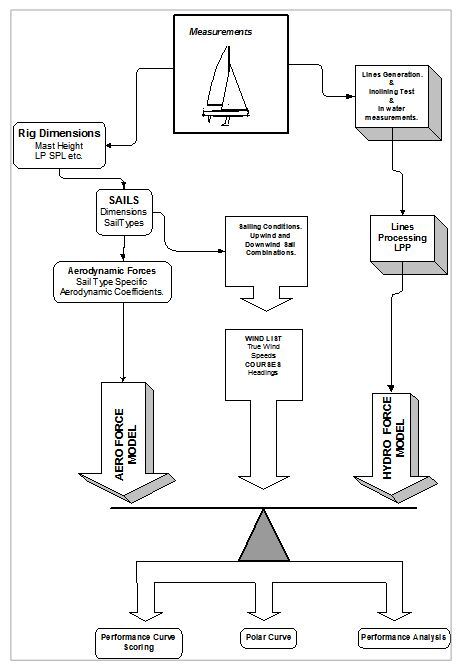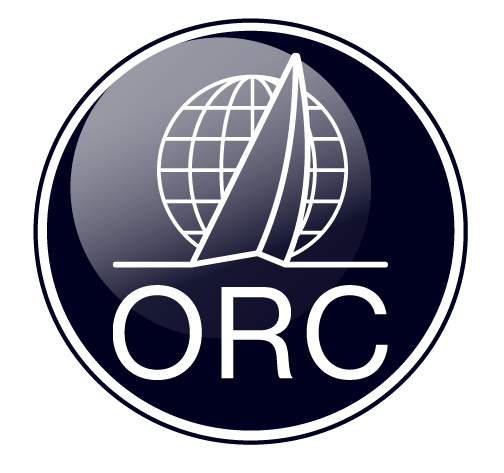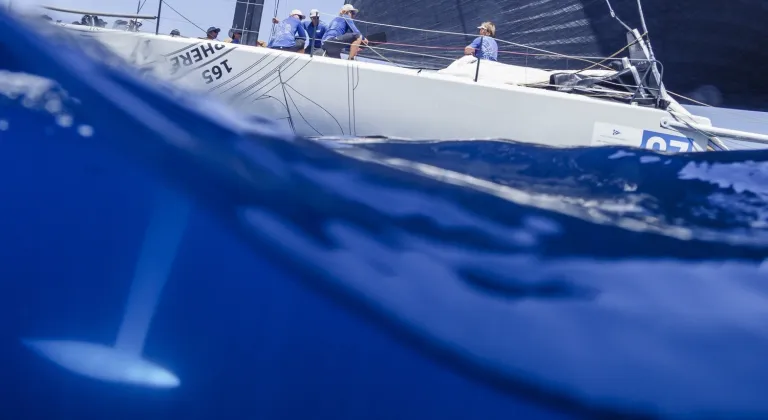Velocity Prediction Program (VPP)
It is objective of any rating system to give a boat rating which depends on her characteristics in order to equalize her with other boats of different size and characteristics. Characteristics that are positive for boat speed, like length of the water line or sail area, and those that are negative, like beam, displacement and wetted surface, are the most common influences in any rating system. Establishing which of these characteristics influences boat speed is therefore the problem that has to be resolved. Thanks to the developments in modern science and technology, ORC gives the most accurate solution to this problem, and establishes important principles of boat measurement and calculation of corrected times.
The only possible way to rate boat fairly is to tell how fast she can sail in certain wind conditions or to predict her speeds. To do so, ORC has developed with continuous research and update an ORC Velocity Prediction Program (VPP) as mathematical model which calculates boat’s performance from the set of measurements and gives rating which is then applied for race scoring. ORC VPP is calculating boat’s theoretical speeds for various conditions: wind strength of 6, 8, 10, 12, 14, 16 and 20 knots, direction of true wind from the close-hauled to 52, 60, 75, 90, 110, 120, 135, 150 and 180 degrees. VPP program creates a computer simulation of the boat’s performance based on scientific research of boat hulls in hydrodynamic basins, sails in aerodynamic tunnels and measurements taken on real boats as well as computer fluid dynamics (CFD) tools available nowadays.
The VPP has a two-part structure comprised of the solution algorithm and the boat model. The solution algorithm must find an equilibrium condition for each point of sailing, where it balances the driving force from the sails with the hull and aerodynamic drag, and the heeling moment from the rig with the righting moment from the hull.

The VPP determines the steady state conditions by satisfying 2 equilibrium equations: Firstly, the net force along the yacht’s track (its direction of motion) must be zero:
Driving Force – Drag = 0
Secondly the aerodynamic heeling moment produced by the mast & sails must be equal and opposite to the righting moment produced by the hull and crew.
Heeling Moment – Righting Moment = 0
We may think the boat model of as a black box into which boat speed, heel angle, and the sail trim parameters, reef and flat are input. The output is simply four numbers:
- the aerodynamic driving force,
- the heeling moment from the above water part of the hull and rig,
- the drag of the hull keel and rudder and,
- the righting moment from the hull and crew.
The solution algorithm iterates to a solution by interrogating the boat model with each new guess of the input values until a set of conditions is found that produces a match of thrust and drag and heeling moment and righting moment. The solution algorithm also seeks to find the highest speed on each point of sailing by adjusting the sail trim parameters for optimum performance.

Aerodynamic model is calculating forces for each type and combination of sails. It has aerodynamic co-efficient coming out from various test form wind tunnels which, in combination with sail area and center of effort height, can give the total driving force on sails. This force is then reduced for the drag of hull, mast and crew windage as well as rigging wire.
Hydrodynamic model is from hull lines and in water freeboards measurement calculating boat's resistance comprised of several elements:
- Viscous drag due to the friction of the water flowing over the surface of the hull and appendages, and the propeller if one is fitted.
- Residuary drag due to the creation of surface waves.
- Heel drag due to the change in wetted surface and immersed hull shape as the yacht adopts an angle of heel.
- Induced drag created when the hull keel and rudder produce side force
- Raw drag due to the yachts motion in a seaway.
Hydrodynamic model use results of tank testing and computed fluid dynamics in constant research of these values comparing it with real boat performance. It was shown that latest changes in the residuary resistance made the ORC VPP the most accurate so far.
Second equilibrium to match is one between heeling moment and righting moment. Heeling moment is calculated from the aerodynamic heeling force and sail plan centre of effort height, taking also into account hull windage, mast windage, rigging wire and crew windage heeling moment. Righting moment as a result of stability measurement is reduced for the stability loss due to forward speed and increased for effect of the shifting crew.
VPP calculations take into account additional weight on board for the total crew and sails and equipment on board while racing.






